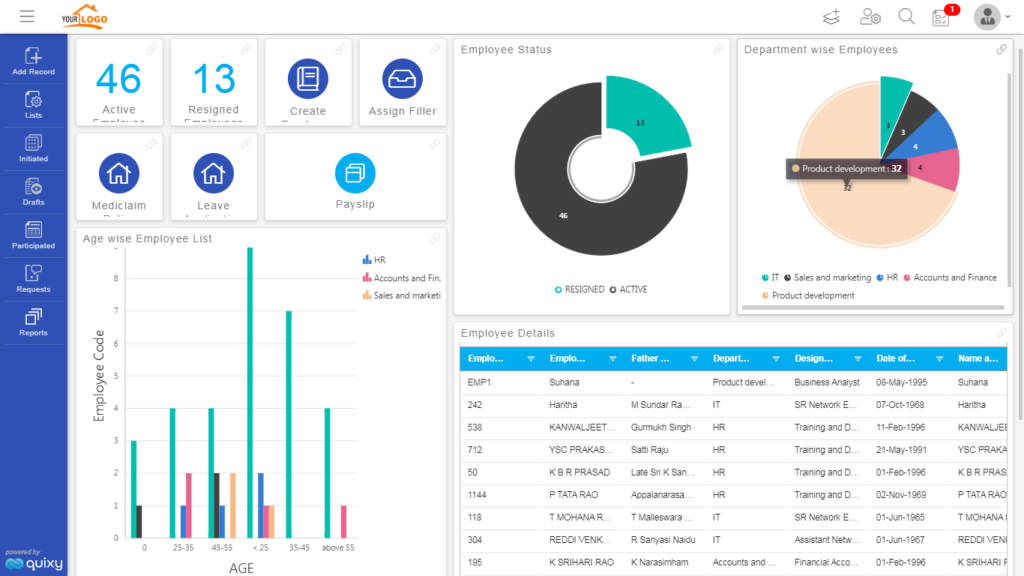A Comprehensive Overview to Executing Scalable Databases Without the Need for Coding Knowledge
In the contemporary landscape of information management, the capacity to apply scalable databases without coding proficiency is ending up being significantly essential for organizations of all dimensions. This guide intends to illuminate the process, concentrating on easy to use tools and intuitive user interfaces that debunk data source arrangement. By analyzing crucial functions, efficient methods for implementation, and ideal practices for ongoing monitoring, we will address exactly how even non-technical users can confidently browse this complex surface. What are the critical elements that can absolutely encourage these users to leverage scalable data sources effectively? The solutions may redefine your approach to data management.
Understanding Scalable Databases
In the realm of modern information management, scalable data sources have emerged as a crucial service for organizations looking for to take care of enhancing quantities of details efficiently. These databases are developed to suit growth by enabling the smooth enhancement of sources, whether via straight scaling (including more machines) or vertical scaling (updating existing devices) This adaptability is crucial in today's busy digital landscape, where data is produced at an unmatched rate.
Scalable data sources typically utilize dispersed architectures, which enable information to be spread out throughout several nodes. This circulation not just enhances performance but also supplies redundancy, making sure data availability also in case of equipment failings. Scalability can be an important variable for different applications, consisting of ecommerce platforms, social media sites networks, and large information analytics, where individual demand can change substantially.
Furthermore, scalable databases commonly include durable data uniformity designs that stabilize efficiency and reliability. Organizations should consider their specific requirements, such as read and create speeds, data honesty, and fault resistance when picking a scalable database option. Eventually, understanding the underlying principles of scalable data sources is essential for services aiming to prosper in a significantly data-driven world.
Trick Attributes to Look For
When reviewing scalable data sources, a number of key functions are critical to making sure optimum efficiency and dependability. Primarily, think about the style of the data source. A dispersed architecture can improve scalability by permitting information to be saved throughout numerous nodes, helping with smooth information access and handling as need increases.
An additional essential attribute is data partitioning, which enables effective management of large datasets by separating them right into smaller sized, extra workable items (no-code). This strategy not only enhances performance however also simplifies source allocation
Furthermore, look for robust replication capabilities. This attribute makes sure information redundancy and high availability, minimizing downtime during upkeep or unexpected failings.
Performance tracking tools are additionally essential, as they provide real-time understandings into system health and wellness and operational efficiency, permitting timely modifications to keep optimum performance.

User-Friendly Data Source Devices
Simplicity is an essential aspect in the style of straightforward database tools, as it boosts access for individuals with varying levels of technical proficiency. no-code. These devices prioritize intuitive user interfaces, allowing individuals to produce, manage, and query data sources without calling for considerable programming knowledge
Trick functions normally include drag-and-drop functionality, visual data modeling, and web pre-built layouts that improve the setup process. Such devices usually supply guided tutorials or onboarding procedures that facilitate user engagement and reduce the discovering contour. Additionally, seamless integration with popular information sources and solutions guarantees that customers can conveniently import and export data, even more simplifying operations.

Moreover, robust assistance and area resources, such as online forums and documentation, improve the user experience by giving support when required. Generally, user-friendly database devices encourage organizations to harness the power of scalable data sources, making data administration obtainable to everybody entailed.
Step-by-Step Application Guide
How can organizations successfully implement scalable databases to satisfy their look at these guys expanding information needs? The process starts with recognizing particular data needs, including the quantity, range, and rate of information that will certainly be refined. Next, organizations should assess easy to use data source devices that provide scalability attributes, such as cloud-based services or handled database services.
As soon as the ideal tool is selected, the following step entails configuring the data source setting. This includes establishing instances, specifying user permissions, and developing information frameworks that straighten with company goals. Organizations needs to then move existing information into the new system, guaranteeing data honesty and minimal interruption to procedures.
Post-migration, performing detailed screening is essential; this consists of performance testing under numerous lots problems to guarantee the system can take care of future development - no-code. In addition, it is necessary to train staff on the data source monitoring interface to promote seamless usage
Finest Practices for Management
Reliable management of scalable data sources requires a critical approach that focuses on recurring surveillance and optimization. To achieve this, organizations should apply durable monitoring tools that offer real-time insights into data source performance metrics, such as question action times, source usage, and transaction throughput. Routinely analyzing these metrics can aid determine bottlenecks and locations for enhancement.

Regular backups and calamity healing plans try these out are important to protect information integrity and accessibility. Establishing a routine for examining these back-ups will guarantee a trustworthy recuperation process in instance of an unanticipated failing.
Moreover, performance adjusting ought to be a continual process. Readjusting indexing strategies, optimizing queries, and scaling resourcesâEUR" whether vertically or horizontallyâEUR" will certainly help preserve optimal efficiency as usage needs develop.
Finally, cultivating a society of expertise sharing amongst staff member will enable continual knowing and adaptation, making certain that the administration of scalable databases continues to be efficient and effective over time.
Conclusion
To conclude, the application of scalable databases can be effectively achieved without coding knowledge through the usage of straightforward devices and instinctive interfaces. By sticking to the outlined approaches for arrangement, data movement, and efficiency screening, individuals can navigate the intricacies of database monitoring easily. Stressing best practices for continuous upkeep and collaboration additional enhances the ability to handle scalable databases successfully in a quickly developing data-driven environment.
In the modern landscape of data monitoring, the capability to implement scalable databases without coding proficiency is coming to be significantly vital for companies of all dimensions.In the world of modern information management, scalable data sources have arised as an essential remedy for companies looking for to deal with boosting quantities of information efficiently.Additionally, scalable data sources usually feature robust data consistency models that balance performance and dependability.Just how can organizations properly apply scalable data sources to satisfy their expanding information demands? Next off, organizations must review user-friendly data source devices that provide scalability features, such as cloud-based services or handled data source solutions.